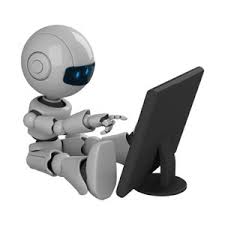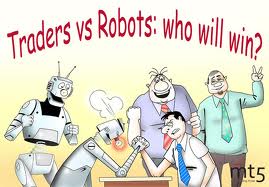Manual Trading
Manual Trading is an Art Form

Automated trading is all the rage right now (please see my article, Automated Trading from Home) but if you really want to become a super slick professional trader you may wish to consider manual trading. Manual trading is an art form.
To learn manual trading you must first understand the subtleties of the orders you place
STOP LOSS vs STOP LIMIT, UNDERSTANDING THE DIFFERENCE
Understanding the difference between stop loss and stop limit is very critical to profitable trading. Understanding how to choose the right kind of order can prevent trading losses due to either failure to get out of bad trades or failure to get into good trades.
Stop loss usually means an order placed to get out of a trade, but stops can also be used to enter trades.
FIRST OF ALL SOME QUICK DEFINITIONS:
A STOP LOSS ORDER is a resting order placed with your broker prior to the price being hit.
For example you may have bought 1000 shares of XYZ at 51.5. In order to limit your loss to about $1,500 you place a stop loss order to sell 1000 XYZ at 50.00 stop. That stop loss order is ALWAYS filled once the price of 50.00 is hit.
Once the price of 50.00 is hit the stop loss order becomes a market order. As a market order it is it is going to be filled at whatever price is available at the time. Sometimes it may be filled at 50.00, but most likely it will be filled at 49.99 or lower. This stop loss order will NEVER be filled at a price better than 50.00 and if it is filled better rest assured that your broker will find a way to pocket the extra money.
The difference between your stop loss price (50.0) and the price you actually get, say 49.97, is called SLIPPAGE. If you are filled at 49.97 on 1000 shares your slippage amounts to $30. If you are paying your broker $20 commissions this means that your TRANSACTION COSTS for this trade is $50 (commission + slippage).
Commissions and slippage can eat you alive and this is why I recommend using a broker charging no more than $3 per round turn trade.
And to complicate the matter there are many dishonest brokers who make their living pocketing your slippage. Many years ago I had a floor trader take 6 minutes to fill a stop order and this delay cost me thousands of dollars. Acting as my own lawyer I took the guy to court and won (Buran v Lerman). The guy had to pay me back everything, pay his own attorney and court costs and in the end the exchange banned him from trading for life. But I was lucky and won only because this floor trader’s actions were so egregious. Usually dishonest brokers just nickel and dime you to death and you can’t prove anything. But they will erode your profits seriously.
You should assume the markets are corrupt because they are and you should assume your broker is dishonest because he probably is.
STOP LIMIT ORDERS
So is a stop limit order the solution? Many novice traders think that a stop limit order is the solution to all these problems. A stop limit order differs from a stop loss order in that it forces the broker to fill the order at the limit price or not fill it at all. A limit order must be filled WITHOUT SLIPPAGE.
The problem is the last part of our definition: “or not fill it at all”. A limit order will not be filled if there is a lot of competition for that price at the time the price is hit OR the market does not pull back or back tick after the price is first hit.
I have been trading a long time and I will tell you that the great majority of stop limit orders WILL be filled BUT it is the order that you desperately need to have filled that will NOT be filled. Limit orders are practically useless, in my opinion, because there is no guarantee that they will be filled. I am a systems trader and I must have ALL my orders filled. If all my orders are not filled I have no system.
Also rest assured that the limit orders that are NOT filled will cost you the most money. They could even cost you your account. Don’t play with fire.
Limit orders do not work for entry and exit of system trades and for that reason I never use them.
SO WHAT IS A TRADER TO DO? If, on one hand, stop orders are almost always filled with expensive slippage costs attached and, on the other hand, important limit orders are oftentimes not filled.
MANUAL TRADING AND THE MANUAL EXECUTION OF ORDERS

If you want to go with full automation ( see my article Automated Trading from Home) you are just going to have to accept a small amount of slippage for every trade.
But if you like to sit in front of the computers as I do watching markets and writing and reading, you may want to try something else. The solution that I have worked out over years of trial and error is something I call MANUAL TRADING or MANUAL ORDER EXECUTION. I still use a computer online order placement system to do this manual order execution. But I call it manual trading because I DO NOT place resting orders with my broker that allow him to play around with my orders and to execute those orders to HIS advantage.
Instead I make the trading decisions myself and execute all orders as market orders when my computer beeps me “market position has changed” (Please see Automated Trading Software). Using my trading platform my computer has no problems following my 70 markets simultaneously. The computer is still doing the thinking for me.
Although this requires me to be in front of my computers at all times when the markets are open, it is time well spent and when I have been trading millions of dollars it has saved me conservatively 100s of thousands of dollars.
I also get a lot of other work done in front of my computers and right now I am writing this article and posting on Stock Twits while I am monitoring my stock positions for today. Believe me I am working and making money while I sit here. This is not time wasted.
This is why manual trading can save you a lot of money if you can learn to be a sophisticated trader and NEVER skip trades. Normal price behavior follows a pretty predictable pattern. It goes up and then pulls back and then goes up again and then pulls back again. With no experience at all you will find that by placing market orders immediately after your buy price is hit that you will start getting some trades with positive slippage. When I say positive slippage I mean that you are getting a better price than your system price.
But when you place resting orders with your broker you will NEVER get better price than your system price.
NEGATIVE SLIPPAGE
But also be aware that just as you can sometimes gets positive slippage doing manual order execution there will be times you will get NEGATIVE SLIPPAGE as well.
Through practice you will learn when it is time to jump on a trade immediately and accept whatever price at the market you can get even if you must accept negative slippage.
A Scary Story about Manual Trading
I remember one experience I had that still makes me sweat a little thinking about. I was managing an account just under seven million dollars. A report came out that I was not expecting and prices exploded to the upside and I suddenly had to get into over 60 markets. I tried to stay calm and move my fingers as fast as I could, but it took me nearly 40 minutes to get 60 market orders in and filled.
But what happened in those 40 minutes was interesting. For the first 10 minutes all the markets made their highs in the sky caused by filling all the resting stop orders that were in all those markets. But then for the next 30 minutes the prices came back as some profit taking, perhaps by day traders, came into the markets.

Then the buying came back in and almost all the markets made new highs before the close.
This resulted in my market orders for the first 10 minutes being filled poorly but the market orders for the next 30 minutes being filled at much better prices. Rest assured that if I had placed stop orders I would have been filled right at the top of the initial spikes and if I had placed limit orders I would not have been filled at all.
After the market was closed I put everything into a spread sheet and discovered that I had suffered $200,000 in negative slippage! That was the bad news. But the good news was that I had still captured about 70% of the move and that I had netted $600,000 in profits.
Not bad for a days work.
The Advantages of Manual Trading
But the point I would like to make here is that if you place resting orders with your broker you will never be filled at prices better than what your order specifies and most of the time you will be filled worse. However, if you manually execute your orders your fills will be a mixture of positive and negative slippage and, with a little practice, the two will tend to cancel each other out.
If you get really good at this you can all but eliminate transaction costs and keep all that money that your broker used to get.
So forget about stop loss orders and stop limit orders. When using those orders you are inadvertently making huge contributions to the corrupt brokerage industry.
Alternatively I would suggest that it would be well worth your time to learn manual order execution. If you really want to become a professional trader and make your living trading the stock market profitably you need to learn to sit in front of the computers and learn how to place orders manually. Learning manual trading should become the ultimate refinement of your professional trading skills.
The following two tabs change content below.
![]()
Robert Buran

